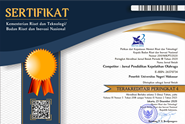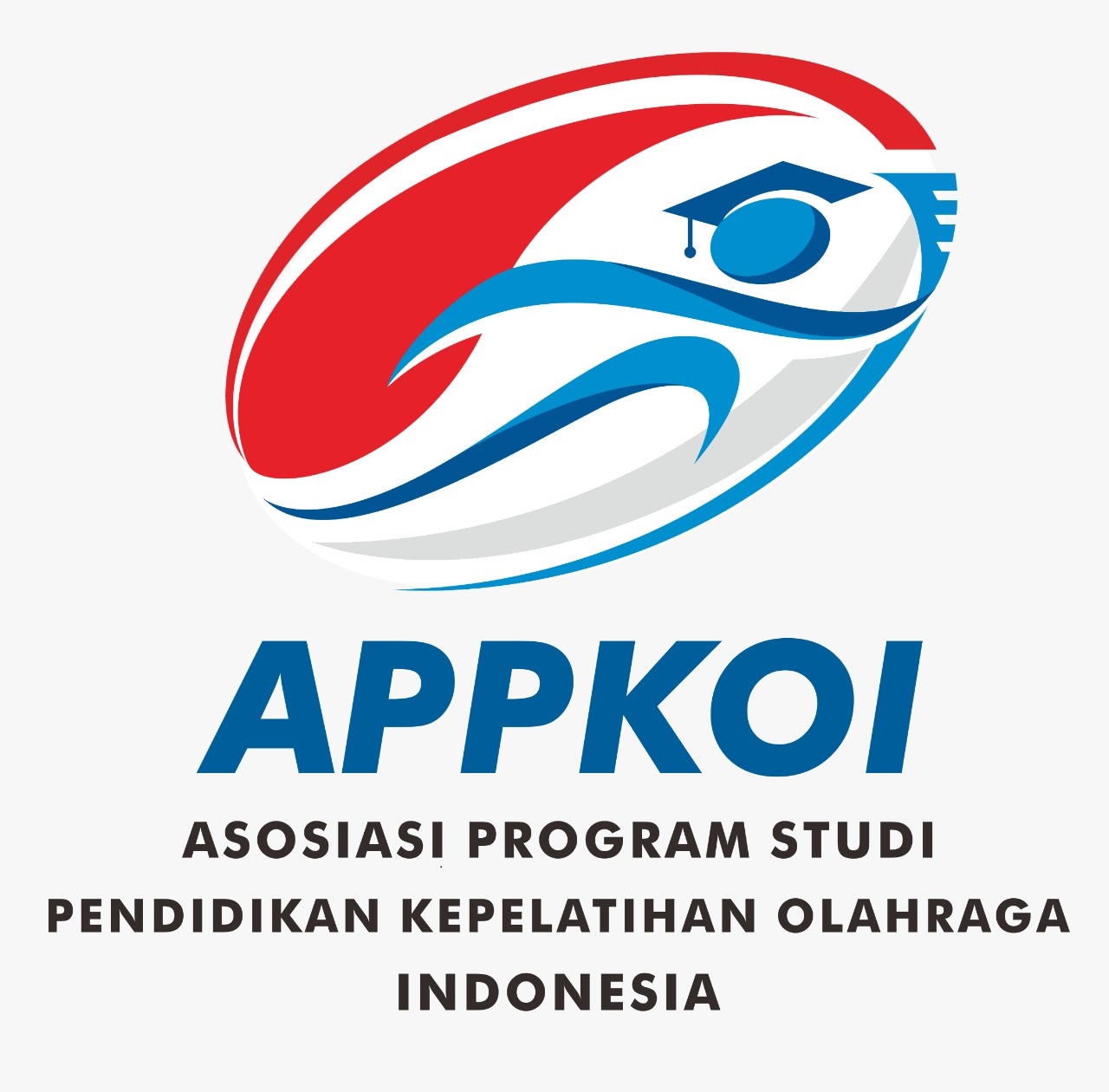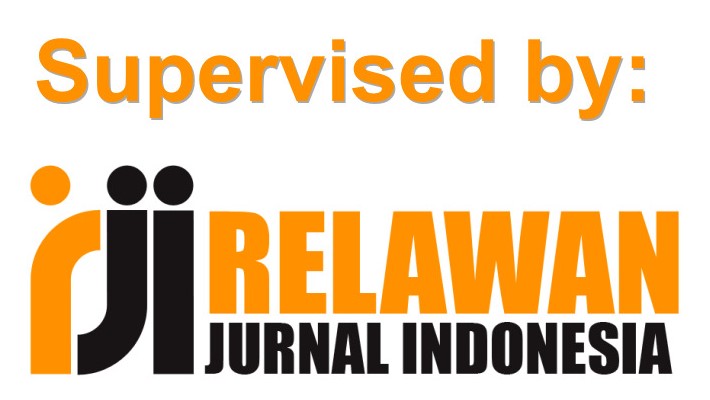Analysis Of Changes In Nitric Oxide (NO) And F2-Isoprostane Levels After The 30 Km Cycling Event In The Makassar Bike Community
(1) Hasanuddin University
(2) Hasanuddin University
(3) Hasanuddin University
(4) Hasanuddin University
(5) Hasanuddin University
(6) Hasanuddin University
(*) Corresponding Author
DOI: https://doi.org/10.26858/cjpko.v15i1.43631
Abstract
This study aims to determine changes in Nitric Oxide (NO) and F2-Isoprostane levels after a 30 km cycling event in the Makassar cycling community. This research was a pre-experimental study with a one-group pretest & post-test design with 30 cyclists as subjects in the city of Makassar, men aged 30-60 years. Blood sampling was carried out pre-event and post-event cycling as far as 30 Km. Measurement of F2-Isoprostane & Nitric Oxide levels using the ELISA method. Data analysis used the Wilcoxon test to see changes in Nitric Oxide (NO) and F2-Isoprostane levels after participating in a 30 Km cycling event. Data analysis using the Mann-Whitney test was used to see differences in changes in Nitric Oxide (NO) and F2-Isoprostane levels in the age group, average speed, exercise category, BMI, and smokers. Spearman test to see the correlation of changes in Nitric Oxide (NO) and F2-Isoprostane levels. The results of this study found that the 30 km cycling event had a significant effect on changes in Nitric Oxide (NO) levels which could improve the function of the vascular endothelium with p=0.0001. Meanwhile, the 30 km cycling event had no significant effect on changes in F2-Isoprostane levels, which meant that it had no risk of oxidative stress and tissue damage (p=0.688). There is no positive correlation between changes in Nitric Oxide (NO) levels and changes in F2-Isoprostane levels, which means that changes in the repair of vascular endothelial function seem to suppress free radical production which leads to oxidative stress after cycling as far as 30 Km.
Keywords
Full Text:
PDFReferences
Alfirdaus, Y. A. Z., & Susanto, I. H. (2021). Aktivitas Olahraga Bersepeda Pada Saat Pandemi Covid-19 Di Kabupaten Tuban. Jurnal Kesehatan Olahraga, 09, 81–90.
Ambarsari, D. (2019). Perkembangan Aktivitas Olahraga Senam Aerobik Dalam Meningkatkan Kebugaran Masyarakat Kota Surakarta. Gelanggang Pendidikan Jasmani Indonesia, 3(2), 82–90. http://journal2.um.ac.id/index.php/jpj
Arikawa, A. Y., Thomas, W., Gross, M., Smith, A., Phipps, W. R., Kurzer, M. S., & Schmitz, K. H. (2013). Aerobic training reduces systemic oxidative stress in young women with elevated levels of F 2 -isoprostanes. Contemporary Clinical Trials, 34(2), 212–217. https://doi.org/10.1016/j.cct.2012.11.003
Astutik, P., Adriani, M., & Wirjatmadi, B. (2014). Kadar radikal superoksid (O2-), nitric oxide (NO) dan asupan lemak pada pasien hipertensi dan tidak hipertensi. Jurnal Gizi Indonesia (The Indonesian Journal of Nutrition), 3(1), 1–6. https://doi.org/10.14710/jgi.3.1.90-95
Baraas, F., Rilantono, L., Diniharini, S., Kurniawan, I., Christian, R., & Kusmana, D. (2013). Effect of short-term low-intensity exercise training on association of oxygen free radicals and nitric oxide production in patients with acute myocardial infarction. International Journal of Angiology, 22(3), 159–164. https://doi.org/10.1055/s-0033-1348881
Berawi, K. N., & Agverianti, T. (2017). Efek Aktivitas Fisik pada Proses Pembentukan Radikal Bebas sebagai Faktor Risiko Aterosklerosis Physical Activity Effects on Free Radicals Development as Risk Factor of Atherosclerosis. Majority, 6(2), 85–90.
Bogdanis, G. C., Stavrinou, P., Fatouros, I. G., Philippou, A., Chatzinikolaou, A., Draganidis, D., Ermidis, G., & Maridaki, M. (2013). Short-term high-intensity interval exercise training attenuates oxidative stress responses and improves antioxidant status in healthy humans. Food and Chemical Toxicology, 61, 171–177. https://doi.org/10.1016/j.fct.2013.05.046
Bopp, M., Sims, D., & Piatkowski, D. (2018). Benefits and Risks of Bicycling. Bicycling for Transportation, January, 21–44. https://doi.org/10.1016/b978-0-12-812642-4.00002-7
de Gouveia, R. H., C. Ramos, J., & Pinheiro, J. (2016). Sudden cardiac death: the dark side of exercise! Cardiovascular Disorders and Medicine, 1(2), 36–38. https://doi.org/10.15761/cdm.1000110
Facioli, T. de P., Buranello, M. C., Regueiro, E. M. G., Basso-Vanelli, R. P., & Durand, M. de T. (2022). Effect of Physical Training on Nitric Oxide Levels in Patients with Arterial Hypertension: An Integrative Review. International Journal of Cardiovascular Sciences, 35(2), 253–264. https://doi.org/10.36660/ijcs.20200244
González-Bartholin, R., Mackay, K., Valladares, D., Zbinden-Foncea, H., Nosaka, K., & Peñailillo, L. (2019). Changes in oxidative stress, inflammation and muscle damage markers following eccentric versus concentric cycling in older adults. European Journal of Applied Physiology, 119(10), 2301–2312. https://doi.org/10.1007/s00421-019-04213-7
Goods, P. S. R., Dawson, B., Landers, G. J., Gore, C. J., Croft, K., & Peeling, P. (2016). Effect of repeat-sprint training in hypoxia on post-exercise interleukin-6 and F2-isoprostanes. European Journal of Sport Science, 16(8), 1047–1054. https://doi.org/10.1080/17461391.2015.1123776
Green, D. J., Hopman, M. T. E., Padilla, J., Laughlin, M. H., & Thijssen, D. H. J. (2017). Vascular adaptation to exercise in humans: Role of hemodynamic stimuli. Physiological Reviews, 97(2), 495–528. https://doi.org/10.1152/physrev.00014.2016
Isral, G. N., & Sulastri, D. (2014). Artikel Penelitian Hubungan Aktivitas Fisik dengan Kadar Nitric Oxide ( NO ) Plasma pada Masyarakat di Kota Padang. 3(2), 173–177.
Kawamura, T., & Muraoka, I. (2018). Exercise-induced oxidative stress and the effects of antioxidant intake from a physiological viewpoint. Antioxidants, 7(9). https://doi.org/10.3390/antiox7090119
Lidapraja, H. S. (2013). Kadar serum F2-isoprostan yang tinggi meningkatkan risiko terjadinya preeklamsi. 69–159. http://erepo.unud.ac.id/id/eprint/10692/1/fc06d7e7067fa545019dec10c7017c22.pdf
Maghsoudi, Z., Shiranian, A., Askai, G., & Ghaisvand, R. (2016). Effect of various kinds of beverages on stress oxidative, F 2 isoprostane, serum lipid and blood glucose of elite taekwondo players. Iranian Journal of Nursing and Midwifery Research, 21(5), 470–474. https://doi.org/10.4103/1735-9066.193392
Marijon, E., Tafflet, M., Celermajer, D. S., Dumas, F., Perier, M. C., Mustafic, H., Toussaint, J. F., Desnos, M., Rieu, M., Benameur, N., Le Heuzey, J. Y., Empana, J. P., & Jouven, X. (2011). Sports-related sudden death in the general population. Circulation, 124(6), 672–681. https://doi.org/10.1161/CIRCULATIONAHA.110.008979
Marino, F., Scalise, M., Cianflone, E., Salerno, L., Cappetta, D., Salerno, N., De Angelis, A., Torella, D., & Urbanek, K. (2021). Physical exercise and cardiac repair: The potential role of nitric oxide in boosting stem cell regenerative biology. Antioxidants, 10(7). https://doi.org/10.3390/antiox10071002
Otsuki, T., Nakamura, F., & Zempo-Miyaki, A. (2019). Nitric Oxide and Decreases in Resistance Exercise Blood Pressure With Aerobic Exercise Training in Older Individuals. Frontiers in Physiology, 10(September), 1–9. https://doi.org/10.3389/fphys.2019.01204
Pan, X., Zhang, Y., & Tao, S. (2015). Effects of Tai Chi exercise on blood pressure and plasma levels of nitric oxide, carbon monoxide and hydrogen sulfide in real-world patients with essential hypertension. Clinical and Experimental Hypertension, 37(1), 8–14. https://doi.org/10.3109/10641963.2014.881838
Parshukova, O. I., Varlamova, N. G., & Bojko, E. R. (2020). Nitric Oxide Production in Professional Skiers During Physical Activity at Maximum Load. 7(December), 1–8. https://doi.org/10.3389/fcvm.2020.582021
Persio, N., Agricola, A., & Guillo, L. A. (2020). Endothelial Nitric Oxide Concentrations In The Saliva Of Jiu-Jitsu Athletes. 26, 298–301.
Syahrastani, Putri, H., & Yuniarti, E. (2019). The Impact Of Submaximal Excercise On F2 Isoprostane West Sumatra. Journal of Emerging Technologies and Innovative Research (JETIR), 24(9), 5–7.
Tanaka, L. Y., Bechara, L. R. G., Dos Santos, A. M., Jordão, C. P., De Sousa, L. G. O., Bartholomeu, T., Ventura, L. I., Laurindo, F. R. M., & Ramires, P. R. (2015). Exercise improves endothelial function: A local analysis of production of nitric oxide and reactive oxygen species. Nitric Oxide - Biology and Chemistry, 45, 7–14. https://doi.org/10.1016/j.niox.2015.01.003
Thirupathi, A., Pinho, R. A., Ugbolue, U. C., He, Y., & Meng, Y. (2021). Effect of Running Exercise on Oxidative Stress Biomarkers : A Systematic Review. 11(January), 1–12. https://doi.org/10.3389/fphys.2020.610112
Toukola, T., Hookana, E., Junttila, J., Kaikkonen, K., Tikkanen, J., Perkiömäki, J., Kortelainen, M. L., & Huikuri, H. V. (2015). Sudden cardiac death during physical exercise: Characteristics of victims and autopsy findings. Annals of Medicine, 47(3), 263–268. https://doi.org/10.3109/07853890.2015.1025824
Tsukiyama, Y., Ito, T., Nagaoka, K., Eguchi, E., & Ogino, K. (2017). Effects of exercise training on nitric oxide , blood pressure , and antioxidant enzymes. April, 1–7. https://doi.org/10.3164/jcbn.16
Wadsworth, D., & Lark, S. (2020). Randomised control study of oxidative stress in whole body vibration exercise. The Journal of Sports and Exercise Science, 4(1), 53–62.
Wahyuni, et al. (2021). Peningkatan Pengetahuan tentang Penerapan Frekuensi, Intensitas, Tipe, dan Waktu (FITT) dalam Olahraga Bersepeda pada Klub Gowes Puri Bolon Indah. Abdi Geomediains, 2(1), 51–60. https://journals2.ums.ac.id/index.php/abdigeomedisains/article/view/298/123...23 Okt 2021
Article Metrics
Abstract view : 78 times | PDF view : 32 timesRefbacks
- There are currently no refbacks.
Copyright (c) 2023 Risna Yunita

This work is licensed under a Creative Commons Attribution 4.0 International License.
COMPETITOR IS LICENSED BY :
 COMPETITOR is licensed under a Creative Commons Attribution 4.0 International License.
COMPETITOR is licensed under a Creative Commons Attribution 4.0 International License.
COMPETITOR EDITORIAL LOCATION :
![]() Kampus FIK Banta Bantaeng, Jalan Wijaya Kusuma Nomor 14, Rappocini, Makassar, Postal Code 90222
Kampus FIK Banta Bantaeng, Jalan Wijaya Kusuma Nomor 14, Rappocini, Makassar, Postal Code 90222
COMPETITOR IS INDEXED BY















